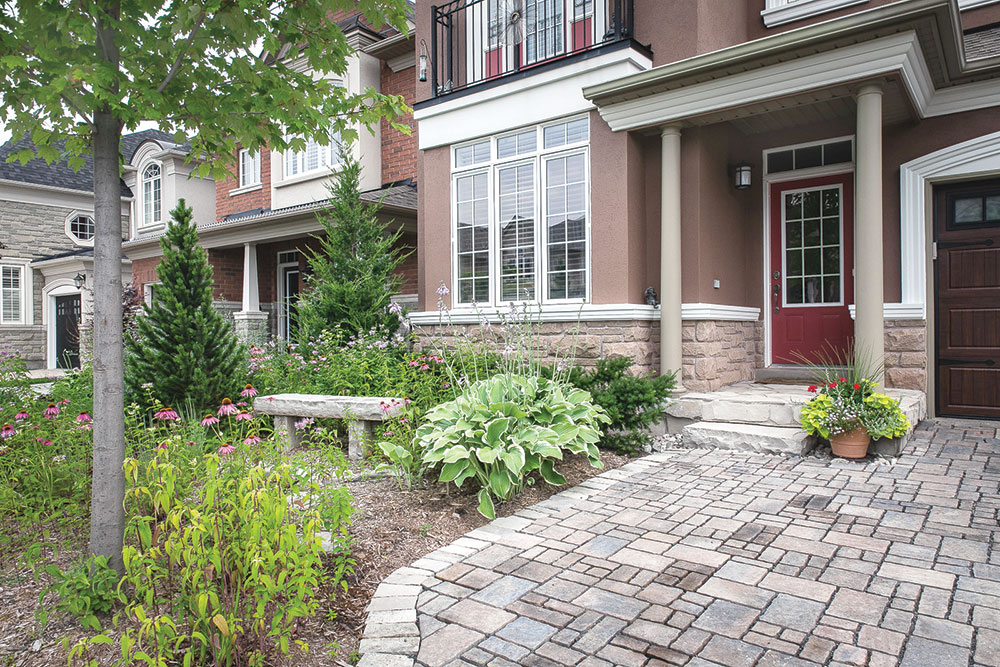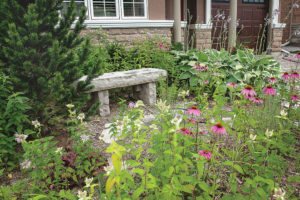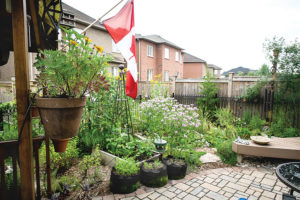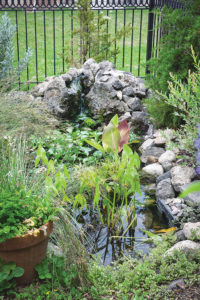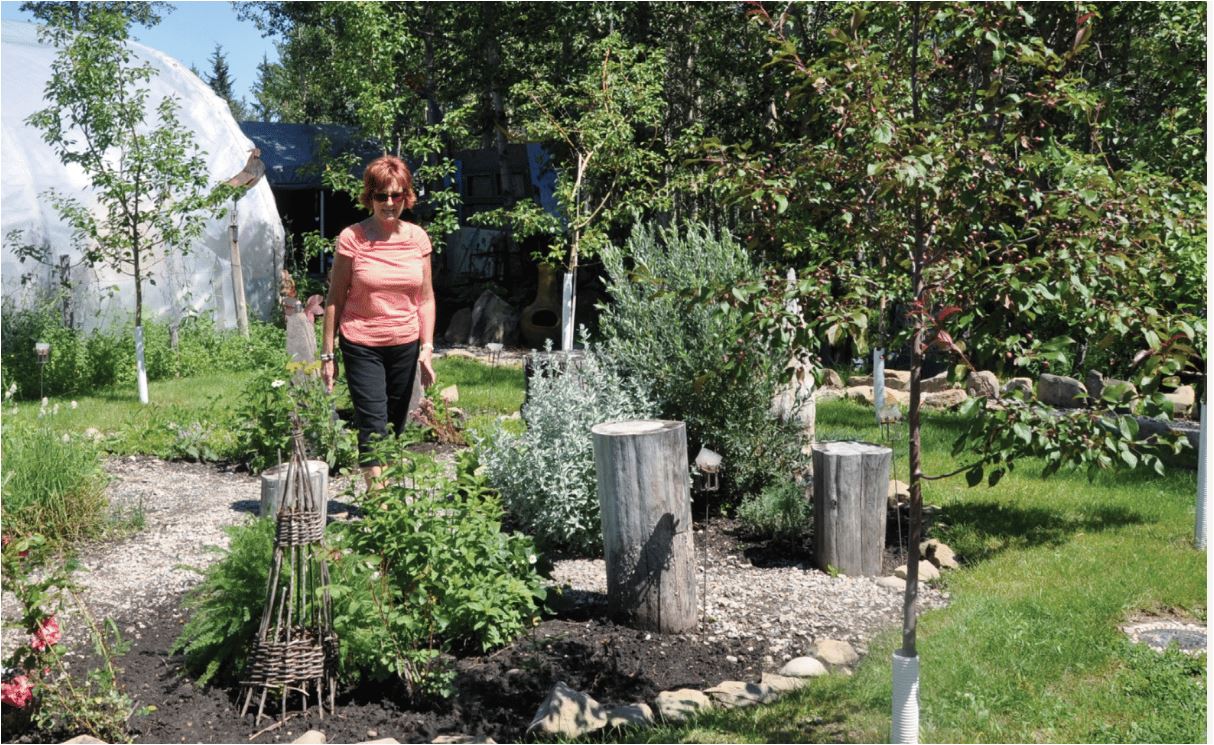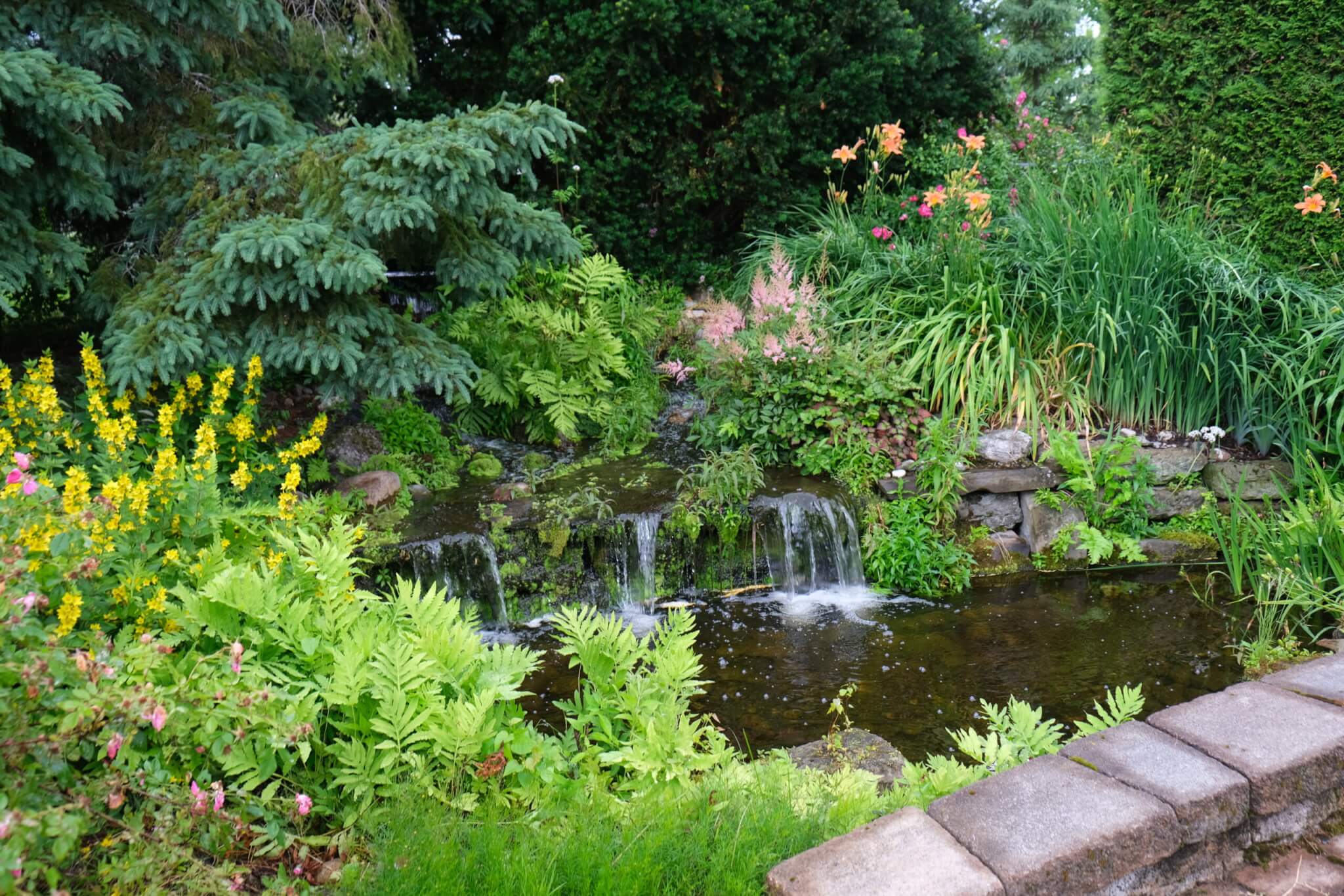Eco-Friendly Equals Beauty
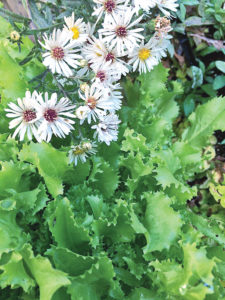
kale and Swiss chard have beautiful foliage that compliments flowers well.

Proof that any garden can be beautiful, this Oakville oasis is primarily composed of plants that are edible, fermentable and medicinal – an unusual palette to say the least. Andy Stark and Julie Winfield have created a truly ‘green’ garden, folding in every branch of eco-friendly landscaping in a most artistic way.
In this tiny garden – the back yard measures only 35 ft. by 28 ft. – many surfaces are home to raised planters and pots overflowing with herbs and vegetables. Even indoors, the kitchen is always home to germinating seeds, greens and sprouts. Many of the perennials and shrubs are edible including asparagus, rhubarb and less traditional plants such as Jerusalem artichoke and water plants such as arrowhead, water celery and water hyacinth. Fruit trees and vines are still adapting to the heavy clay, but they’ll start bearing soon. The clay has been a challenge for traditional veggies, hence all the raised planters.
Fermentables include grapes, junipers and even a ‘Golden Hops’ vine. Each of these serves triple duty, offering screening for privacy and, naturally, offering beauty.
Many of the most popular ornamentals are also medicinal. Lavender, echinacea and herbs could be planted just for beauty’s sake. Our native bee balm – Monarda fistulosa – is an excellent example of a multi-purpose plant. It’s used to fight yeast infections and as a nerve tonic. It’s lovely and it’s great for pollinator support. Echinacea is one of the plants that many folks know the botanical name of, maybe even more readily than they know the common name. This plant is wonderful not only for its medicinal properties, but it’s also great for butterflies, bees and birds. Goldfinches love the seed in winter.
Growing edibles makes one particularly aware of the pollinator issue, so support for bees was designed into the garden and it positively hums with tiny wings! This gives the added benefit of beautiful butterflies bobbing their way from flower to flower. From early blooming fruit trees to late blooming blanket flower, pollinators never want for food.
All paving surfaces, from the driveway to the back patio, are built of Permacon Subterra permeable pavers, ensuring rain soaks into the ground instead of running off into the storm sewers. Each of these has an extra deep (14 in.) base of clear gravel (no fine particles) meaning that there’s a large holding area for storm water. If everyone tried to keep a bit of water on their property, there would be fewer flooding issues, which is a big deal, since flooding now represents the number one insurance claim in Canada.
The property has no lawn and even the boulevard is planted. Salt-tolerant plants include Mexican hat (Ratibida), little bluestem and lavender. It’s a riot of colour from early spring until the snow flies. Not even winter is a boring season in this edible haven since many of the plants – perennials, evergreens and even vines – hold snow artistically. In a province where snow flies five (and sometimes seven) months of the year, this is important.
This garden isn’t just for Andy and Julie. It was designed to teach the public about the fact that ‘eco’ doesn’t have to sacrifice beauty. If you know your plants, learn which ones are tolerant of clay soils (it’s a surprisingly huge list!) and, most importantly, design with texture in mind before flowers, any garden on any soil type can be just as, if not more beautiful than gardens where the soil is modified to suit the plants…and it’s less work in the long run. Soil type never needs to limit beauty; wet or dry, sandy or clay, there’s a list of plants that suit the conditions. It’s just a matter of research.
Not all plants succeeded on the site. Don’t feel bad when plants die. With plants, failure is a learning experience and a chance to try something different. We take gardening too seriously. It’s supposed to be fun. Relax! Look to nature for what plants succeed in certain areas. Most people are looking for low-maintenance gardening. Well-maintained gardens are low maintenance. Perhaps what we’re looking for is low-stress gardens? Part of that is simply a matter of changing our perceptions so that we return to the days where gardening was fun. K
Sean James is a graduate of the Niagara Parks School of Horticulture and owner of Fern Ridge Landscaping & Eco-consulting. He’s been speaking publicly and writing about eco-gardening issues since the early 90’s. He’s also the Chair of Landscape Ontario’s Environmental Stewardship Committee and several other eco-committees.
Featured in Ontario Gardener Beautiful Gardens issue 2015



